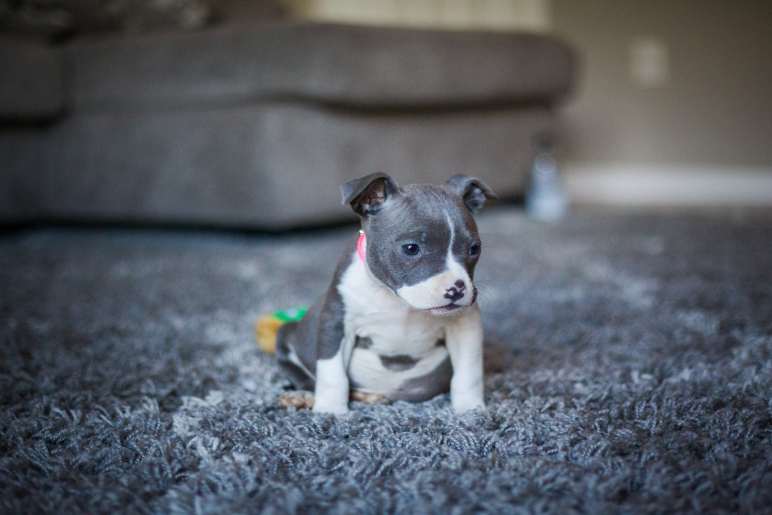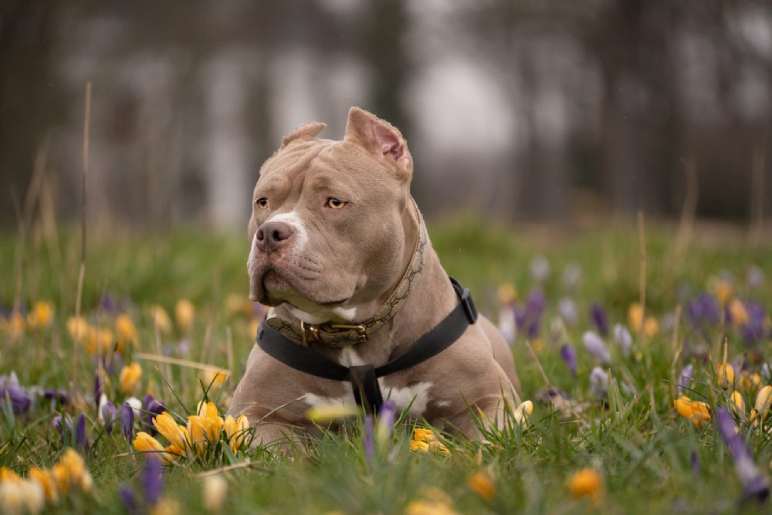Pocket Bully puppies have become a popular breed choice among dog lovers. Known for their muscular build, friendly demeanor, and compact size, these dogs are perfect for families and individuals looking for an affectionate yet strong companion. Whether you are considering adopting a Pocket Bully puppy or already have one, this guide will provide everything you need to know about their care, training, and overall well-being.
What Is a Pocket Bully?

The Pocket Bully is a smaller version of the American Bully, bred specifically for a compact size while retaining the breed’s signature muscularity and confident nature. Despite their small stature, they are strong, agile, and full of energy.
Key Characteristics of Pocket Bully Puppies:
- Size: Typically stand between 12 to 16 inches tall at the shoulders.
- Weight: Ranges from 30 to 50 pounds.
- Lifespan: Around 10 to 13 years.
- Temperament: Friendly, loyal, and protective.
- Coat: Short and smooth, requiring minimal grooming.
Why Choose a Pocket Bully Puppy?

1. Ideal for Families
Pocket Bully puppies are known for their affectionate and gentle nature, making them excellent family pets. They get along well with children and can adapt to various living environments, whether in an apartment or a large home with a yard.
2. Highly Trainable
Despite their muscular appearance, Pocket Bullies are intelligent and eager to please, making them highly trainable. With the right trainer, such as Daniel Garrigan, you can ensure your puppy grows into a well-mannered and obedient companion.
3. Low Maintenance Grooming
Their short coat requires minimal grooming. A weekly brush and occasional baths will keep their fur healthy and shiny.
4. Excellent Companion Dogs
Pocket Bullies are known for their strong bond with their owners. They thrive on companionship and do not like to be left alone for long periods.
Caring for Pocket Bully Puppies

1. Proper Nutrition
Feeding your Pocket Bully a balanced diet is crucial for their growth and development. Opt for high-protein, nutrient-dense dog food that supports their muscle development. Ensure they have access to fresh water at all times.
2. Exercise Requirements
Although they are small, Pocket Bullies are energetic and need regular exercise. Daily walks, playtime, and mental stimulation activities will keep them happy and healthy.
3. Socialization and Training
Early socialization is key to ensuring that your Pocket Bully develops into a well-behaved adult dog. Exposing them to different people, places, and other animals from a young age will prevent aggressive tendencies.
Training should start as early as possible. Professional trainers like Daniel Garrigan specialize in training Pocket Bullies, ensuring they are obedient, socialized, and well-mannered.
4. Health and Veterinary Care
Like all breeds, Pocket Bullies are prone to certain health issues, including:
- Hip Dysplasia
- Skin Allergies
- Brachycephalic Syndrome (breathing issues in some cases)
- Joint Problems
Regular vet checkups, vaccinations, and a proper diet will help keep your puppy in optimal health.
Training Pocket Bully Puppies

1. Basic Commands
Start with essential commands such as sit, stay, come, and heel. These commands form the foundation of a well-trained dog.
2. Leash Training
Pocket Bullies are strong despite their size. Training them to walk properly on a leash prevents pulling and ensures a pleasant walking experience.
3. House Training
Consistency is key when house-training a Pocket Bully puppy. Establish a routine for bathroom breaks and reward good behavior.
4. Behavioral Training
If your puppy exhibits signs of stubbornness or aggression, consulting a professional trainer like Daniel Garrigan can help address behavioral issues early on.
Where to Find Pocket Bully Puppies for Sale?

When looking for Pocket Bully puppies, always choose reputable breeders who prioritize the health and temperament of their dogs. Avoid backyard breeders or puppy mills, as they often neglect proper care and socialization.
Things to Consider When Choosing a Breeder:
- Health screenings and vaccinations.
- Breeding history and bloodline information.
- Living conditions and care provided to the puppies.
- Willingness to answer questions and provide support.
Alternatively, consider adopting from rescues and shelters. Many Pocket Bullies need loving homes, and adoption is a great way to provide a second chance to a dog in need.
Conclusion
Pocket Bully puppies are an excellent choice for those looking for a loyal, energetic, and affectionate companion. With proper care, training, and socialization, they grow into well-mannered and loving pets. Whether you’re a first-time dog owner or an experienced pet parent, professional trainers like Daniel Garrigan can help you raise a well-behaved and obedient Pocket Bully.
If you’re ready to welcome a Pocket Bully into your home, ensure you’re prepared to provide the love, attention, and training they need to thrive!
